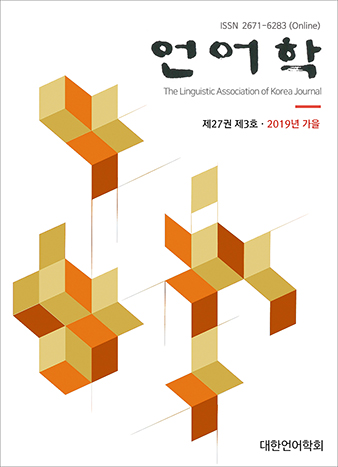대한언어학회 전자저널

27권 3호 (2019년 9월)
- An Alternative Account of English Consonant Cluster Adaptations in Bengali Dialects
-
Chin-Wan Chung
Pages : 99-123
Abstract
Chung, Chin-Wan. (2019). An alternative account of English consonant cluster adaptations in Bengali dialects. The Linguistic Association of Korea Journal, 27(3), 99-123. This study provides a constraint-based analysis of cluster adaptations occurring in Bengali dialects such as spoken Bengali, Dhaka, and Sylheti when English complex words are realized by Bengali speakers or borrowed into Bengali. In spoken Bengali, speakers only employ epenthetic strategy when they realize onset clusters of English. For the selection of vowels, the neutral vowel of English is generally inserted between consonants but the high front vowel is prothesized when a cluster is composed of /s/ plus a voiceless stop. In Dhaka dialect, coda clusters are fixed by either insertion or deletion. Unlike spoken Bengali, the inserted vowel between sonorant consonants is affected by a neighboring vowel. Deletion of an obstruent normally occurs when a cluster consists of a sonorant plus an obstruent but an obstruent survives if a sonorant is dental liquid /r/ in Dhaka. Onset cluster adaptations in Sylheti is similar to that of spoken Bengali but one difference between the two dialects is that an interconsonantally inserted vowel is affected by a following vowel in Sylheti while spoken Bengali still maintains the quality of a neutral vowel.
Keywords
# consonant clusters # adaptations # insertion # deletion # repair strategy